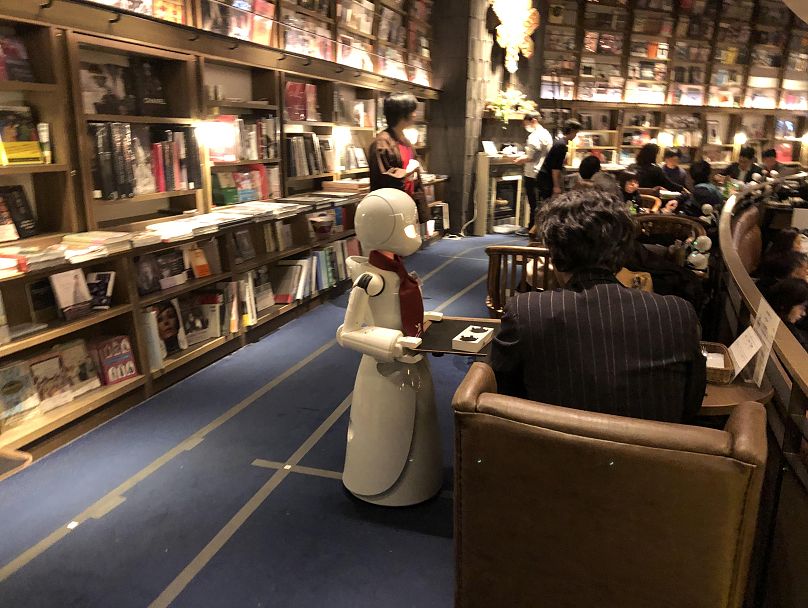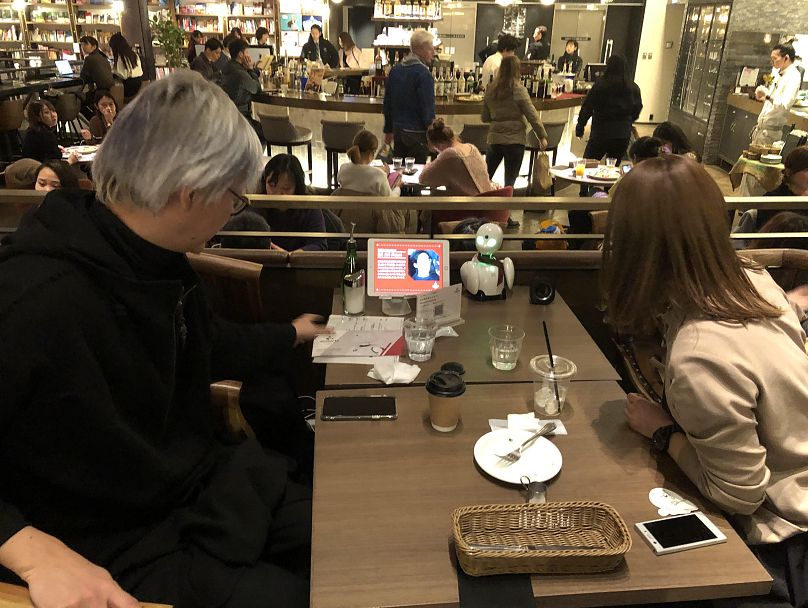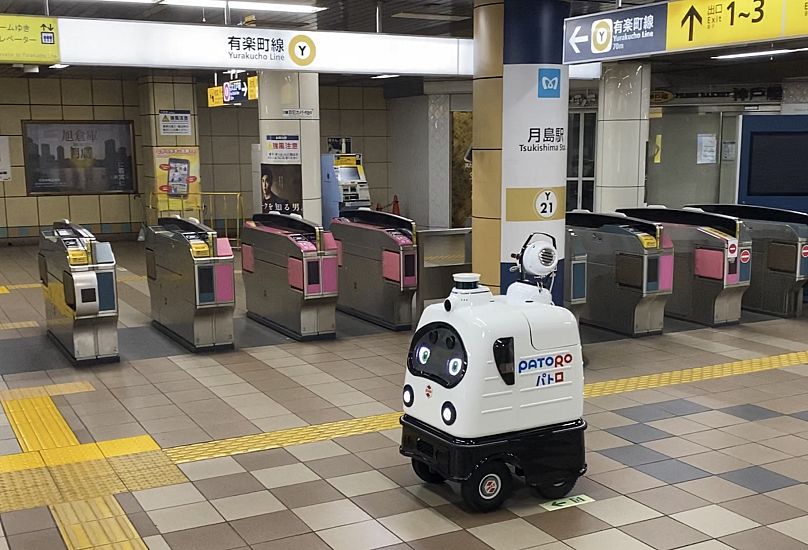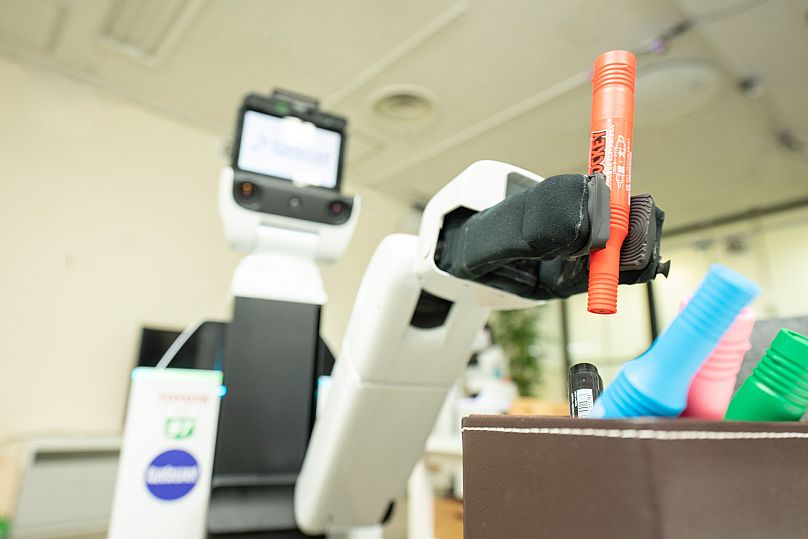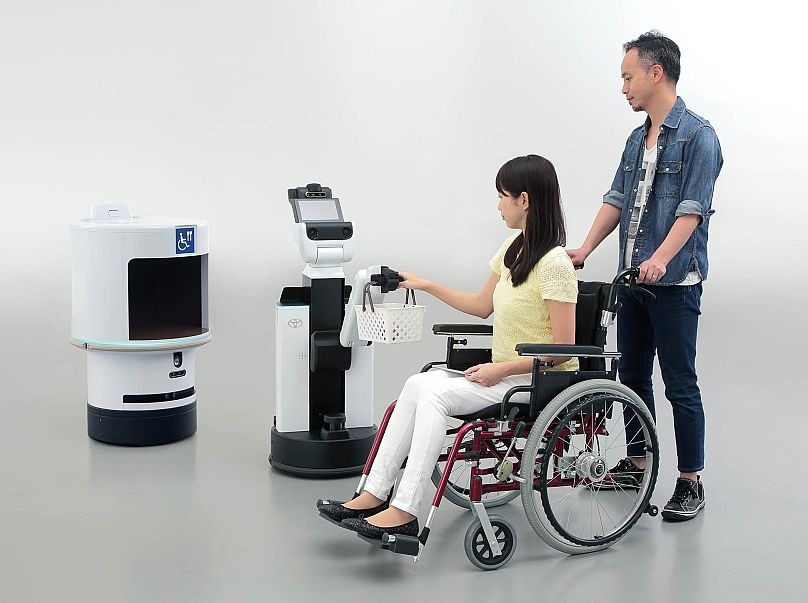The coronavirus pandemic has presented enormous challenges to healthcare providers, businesses, governments, and to the general public. As human systems are being pushed to adapt, Japan’s technology innovators have been stepping forward with potential solutions. Robots are increasingly becoming a presence in our daily lives. By helping to reduce the burdens on healthcare workers, carry out much needed preventive measures, and provide people who are in isolation with a greater link to the outside world, their capabilities will be of great assistance during these trying times.
OriHime opens up new possibilities for working from home
While popular depictions of robot frequently have them either mindlessly following a fixed program or independently determining their own actions through advanced AI, there is another way in which they can function which is proving to be just as versatile and important: as avatars. Ory Laboratory in Japan has been developing robots for the purpose of “solving human loneliness” by providing people with a means of participating in social activities when they themselves cannot be physically present. The OriHime robots allow people who are isolated, whether because of disability, hospitalization, or due to other reasons, to see and hear what is happening around the robot, and to then use the robot to interact with other people. The models range from tabletop communication robots to large-scale mobile robots capable of moving around and performing physical tasks.
During the coronavirus pandemic, the capabilities of OriHime have taken on new importance. People everywhere are reducing the amount of time they spend outside in public spaces, but there is still a need for employees in shops and restaurants. Some businesses have already been using OriHime to enable employees with disabilities to work in roles such as taking customer orders in cafes and serving food. The user can see and hear what is around the robot, and carry out tasks through the highly intuitive interface which allows them to direct the robot from their home. As more people shift to working from home, there is a potential for businesses to adopt robots like OriHime in order to keep themselves and customers safe from infection, while still working in roles that interact with the general public. While this application may still take some time to be realized, Ory Laboratory is working on expanding OriHime’s capabilities, including improving its ability to let users speak, hear and carrying items.
PATORO automates the task of disinfecting public spaces
One of the most important steps we can take to protect ourselves from COVID-19 is to reduce our risk of exposure to the virus. On a personal level, this includes measures such as wearing masks and frequent thorough handwashing. This also includes disinfection of the surfaces we touch, especially if they are also touched by others, such as handrails. This becomes even more important when we realize that people who are most likely to need to use handrails, including people with disabilities and the elderly, are also the most at risk of suffering serious effects if exposed to COVID-19. The traditional countermeasure for most public spaces has been to have them disinfected by cleaning staff, but the effectiveness of this is reduced by the fact that they can only disinfect intermittently in between their many other duties. This activity also adds to their own exposure risk.
As a potential solution, Tokyo-based robotics innovator ZMP has adapted their PATORO robot to also disinfect surfaces during its normal duties. PATORO was originally developed as an autonomous security robot that can observe and analyze its surroundings, but in response to the COVID-19 crisis ZMP increased its functionality by adding a sprayer function. The robot can now be programmed to apply disinfectant to handrails, door handles, elevator buttons and other high-traffic surfaces as it patrols its area. PATORO has already been put into action in several stations and government buildings around Tokyo, and businesses are also looking into employing it.
Toyota’s Human Support Robot can provide needed assistance in care facilities
Although it is famous for its cars, Toyota has also been a global innovator in robotics, which are now seeing applications in a growing range of fields. One place they may be able to provide assistance is in the healthcare sector, which has been under enormous stress due to the pandemic. While hospitals and other facilities are having to operate at full capacity or beyond, the added pressure from COVID-19 has not reduced any of the previously existing needs of those who require continuous healthcare, such as the elderly and people with disabilities. Toyota’s Human Support Robot (HSR) may be able to provide assistance in working with patients currently in long-term care. The robot benefits from Toyota’s expertise in both factory automation and automotive sensors, which give it the ability to grasp and lift a wide range of objects from between eye level and floor level, while navigating rooms and furniture. The robot is capable of handing items gently and safely to people, and can even pick up pieces of paper from the floor. Fitted with video displays that can be used for communication, the robot has the potential to help in reducing some of the workload on healthcare staff, while also allowing patients to have more comfort and autonomy.
The HSR has not seen direct use in the fight against COVID-19 but it has many potential applications, especially as a means of reducing the spread of the disease. By providing care for long-term patients who are more vulnerable, the HSR could reduce the possibility that the infection may inadvertently be carried between patients by staff. And by providing regular face-to-face assistance for patients, the robots could also help to allow hospital staff to focus their attention on more complex tasks.
Developing tech that touches all our lives
The coronavirus pandemic has put all aspects of life under new pressures, but it has also highlighted the existing challenges in society, especially for those with disabilities or health problems. Advanced robotics technologies have the potential to greatly improve public safety and quality of life, especially for vulnerable individuals, and Japan’s innovators are working continuously to bring these technologies to fruition. Perhaps in the coming decade we will be seeing robots serving and assisting in public roles on a regular daily basis.


